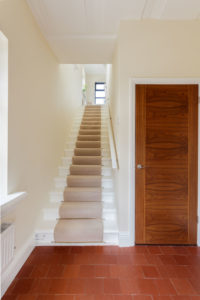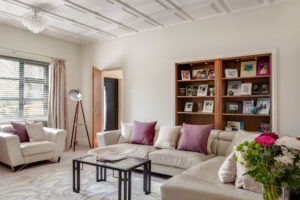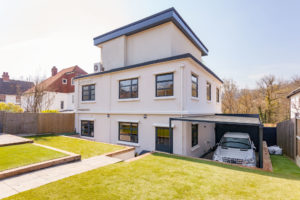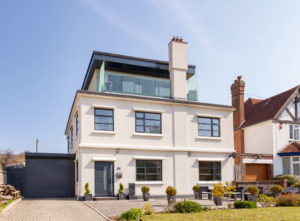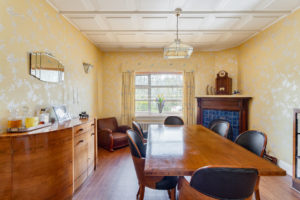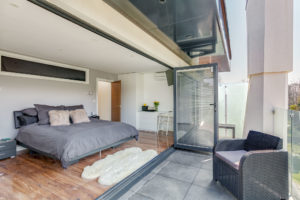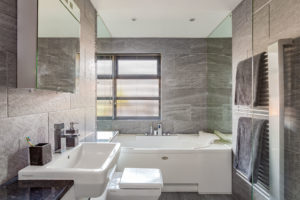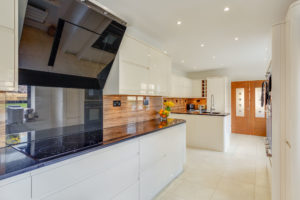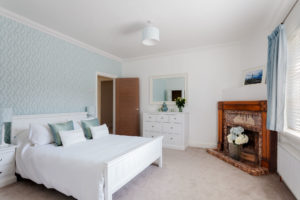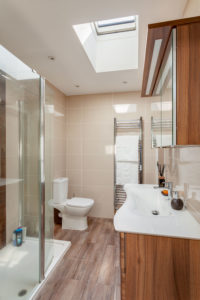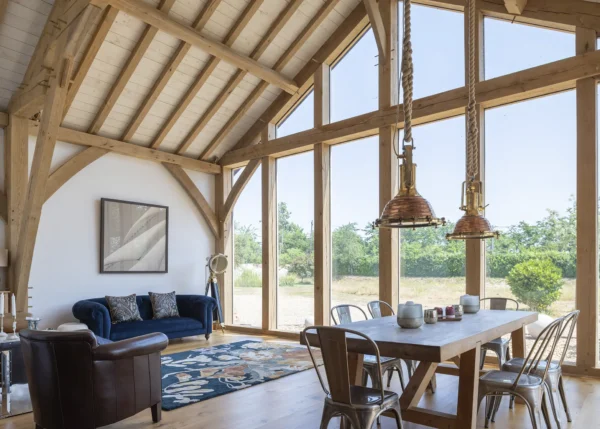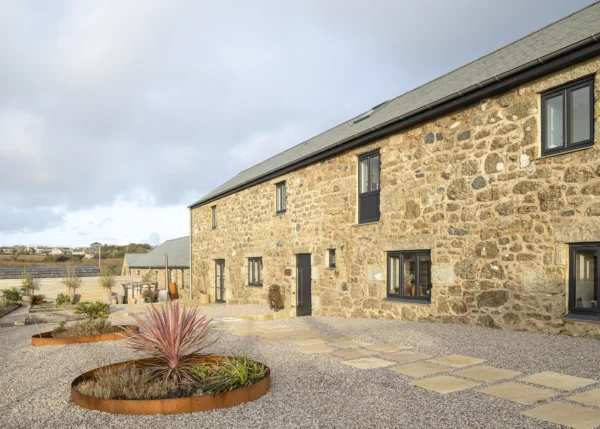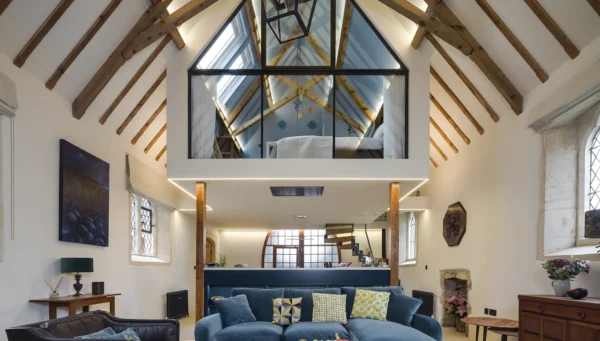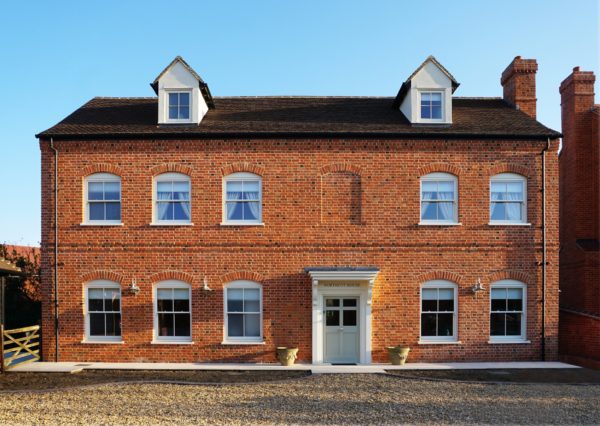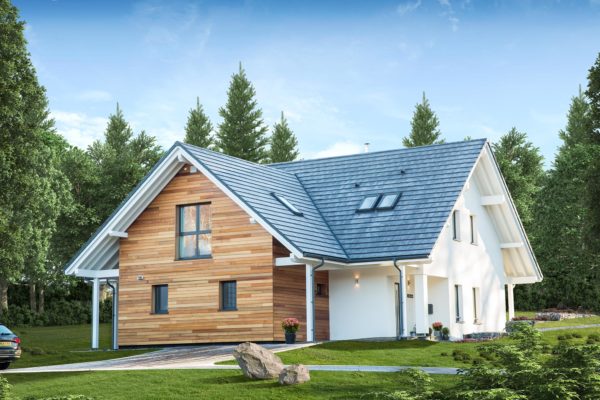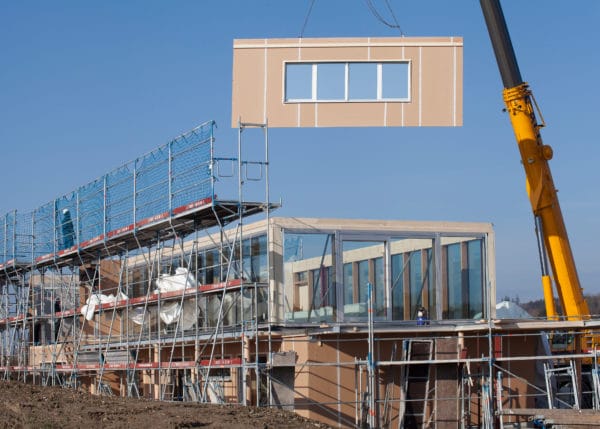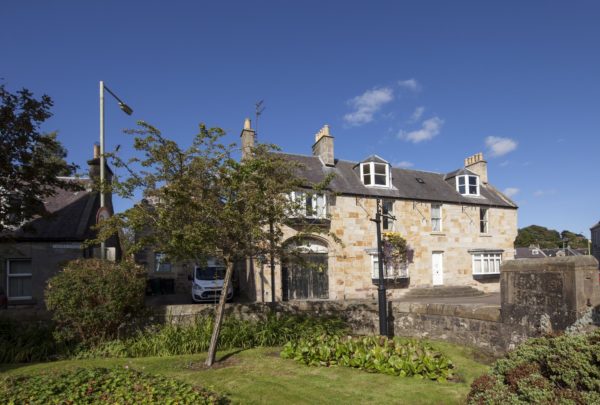Perched at the top of a steep winding driveway with a smartly landscaped front garden, Lance Clifton and Julia De Figueiredo’s home near Dover in Kent gives clear views of the passers-by who frequently stop and stare in admiration of the unique property, a 1930s house with a glass-fronted extension on the roof.
But this wasn’t always the case; when Lance bought the property, “it was hidden behind a giant oak tree,” he says. “When I initially brought in a local surveyor, he said he never even knew the house existed. And once he’d seen it, he also said that he didn’t know how it had escaped being listed.”
- Names Lance Clifton & Julia De Figueiredo
- OccupationsAccountant & Tax manager
- Location Kent
- Type of ProjectRenovation & extension
- StyleModern
- Construction method Prefabricated concrete existing house & timber frame extension
- Project RouteArchitect, then co-project-managed between the main contractor & homeowner
- Plot size750m2
- Property cost £250,000
- Bought 2013
- House size262 m2
- Project cost £550,000
- Project cost per m2 £2,099
- Total cost £800,000
- Building work commencedJune 2013
- Building work took3 years, 9 months (in two phases)
- Current value£750,000
The reason why the house might have been a candidate for heritage protection lies in its unusual history. It was designed and built by local civil engineer John F Matthews, who in the 1920s had patented a new way of building.
The method was prefabricated reinforced concrete, where pretty much every element, from walls and window frames through to chimneys and staircases, is cast off-site from this single material.
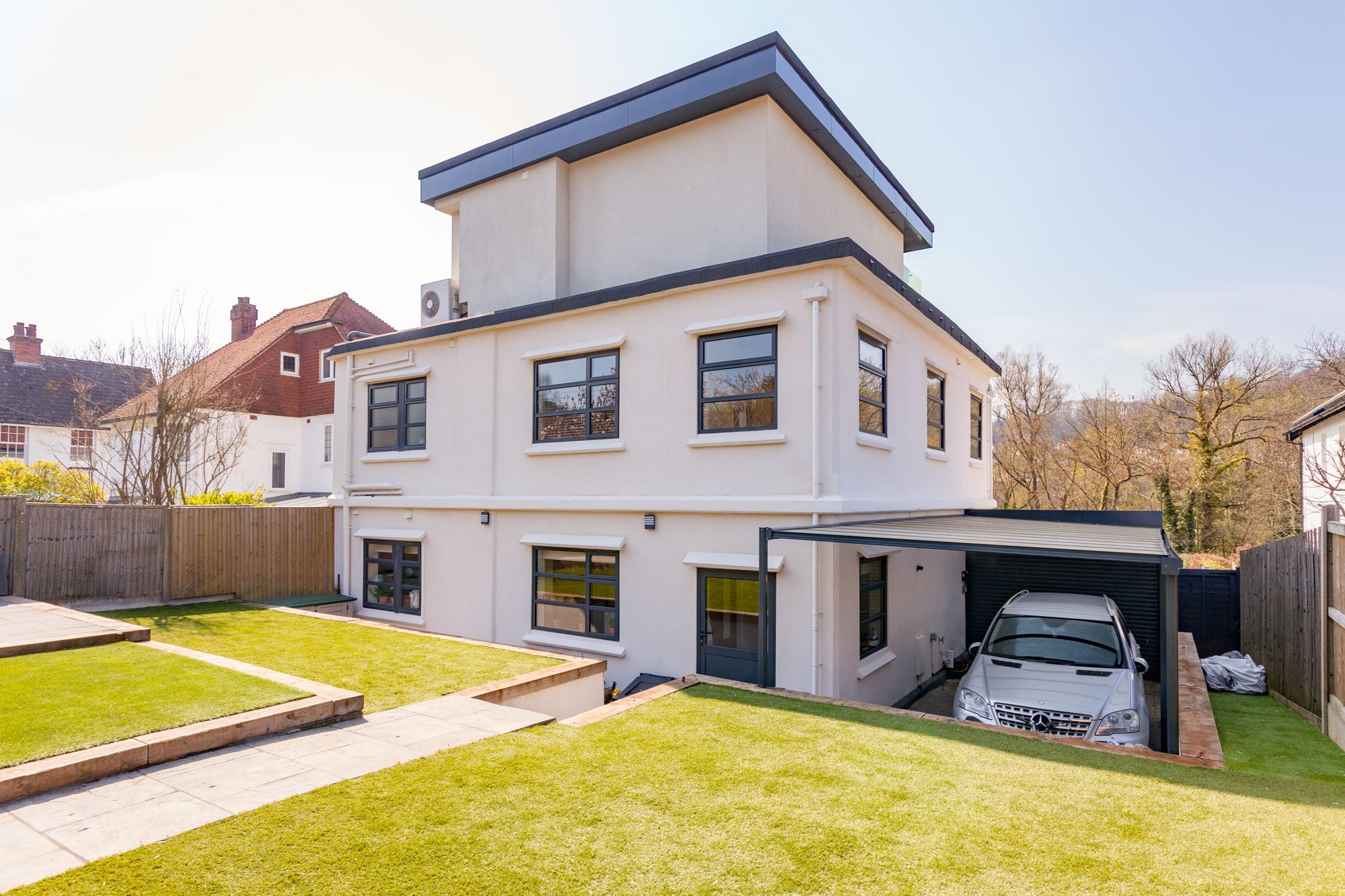
The sloping back garden has been re-landscaped to form stepped terraces, making the space more useable. There are no windows on the rear of the roof extension, for the sake of neighbour’s privacy
John had to wait more than a decade before he got to put his patented design into action – on his own home – and it appears that the house may have been the only example of its kind ever built. Thoroughly ahead of his time, John may have left a rock-solid legacy, but it’s one that has given Lance more than a few headaches when renovating and extending.
Unusual features
“I’d always liked the idea of doing a bit of a project and had looked at quite a few houses in the past, but ultimately gave up. Then Julia found this house on the internet and didn’t think I’d like it – but I did,” says Lance, who purchased the property in 2013.
“It needed a lot of work, however I liked the location and the size of the rooms, plus the fact that it was a bit different. It just felt right.”
The house retained a number of its original features, including unusual coffered concrete ceilings and handsome tiled fireplaces. But it needed a full overhaul and it has been a long road to make it suitable for modern life.
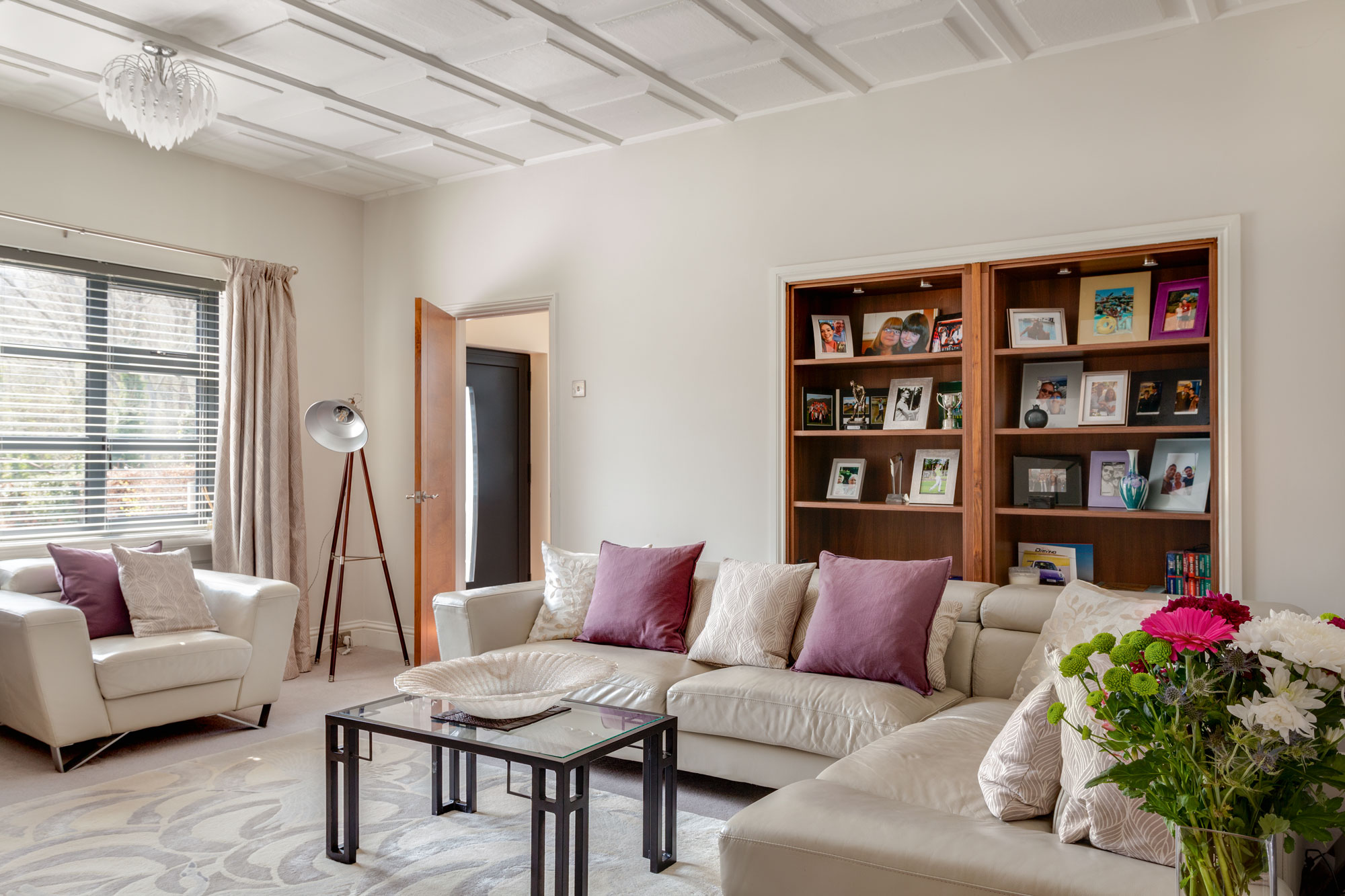
The living room retains its original ceilings. It is made from a series of steels, which support long slabs of cast concrete with a decorative coffered design
Lance saw his initial £100,000 budget go up in smoke almost before he’d finished landscaping the front garden.
“Originally there were just concrete steps up, and no builder could have got any materials up here, so we did that first,” says Lance.
“It was £400 a load to get rid of the earth, and the skips were turning up every 10 minutes. You just cannot believe how fast the money goes.”
Inside, the unyielding concrete caused all kinds of unforeseen problems. One example was chasing cables for new electrics – which is straightforward within a standard plaster wall – but almost impossible here. Lance’s electrician eventually resorted to mounting many of the sockets on the skirting boards.
Thankfully the existing layout had good-sized rooms and Lance didn’t feel the need to open up many of the spaces or move doors and windows – except along the back of the house on the ground floor, where three small rooms were crying out to be made in to a large contemporary kitchen.
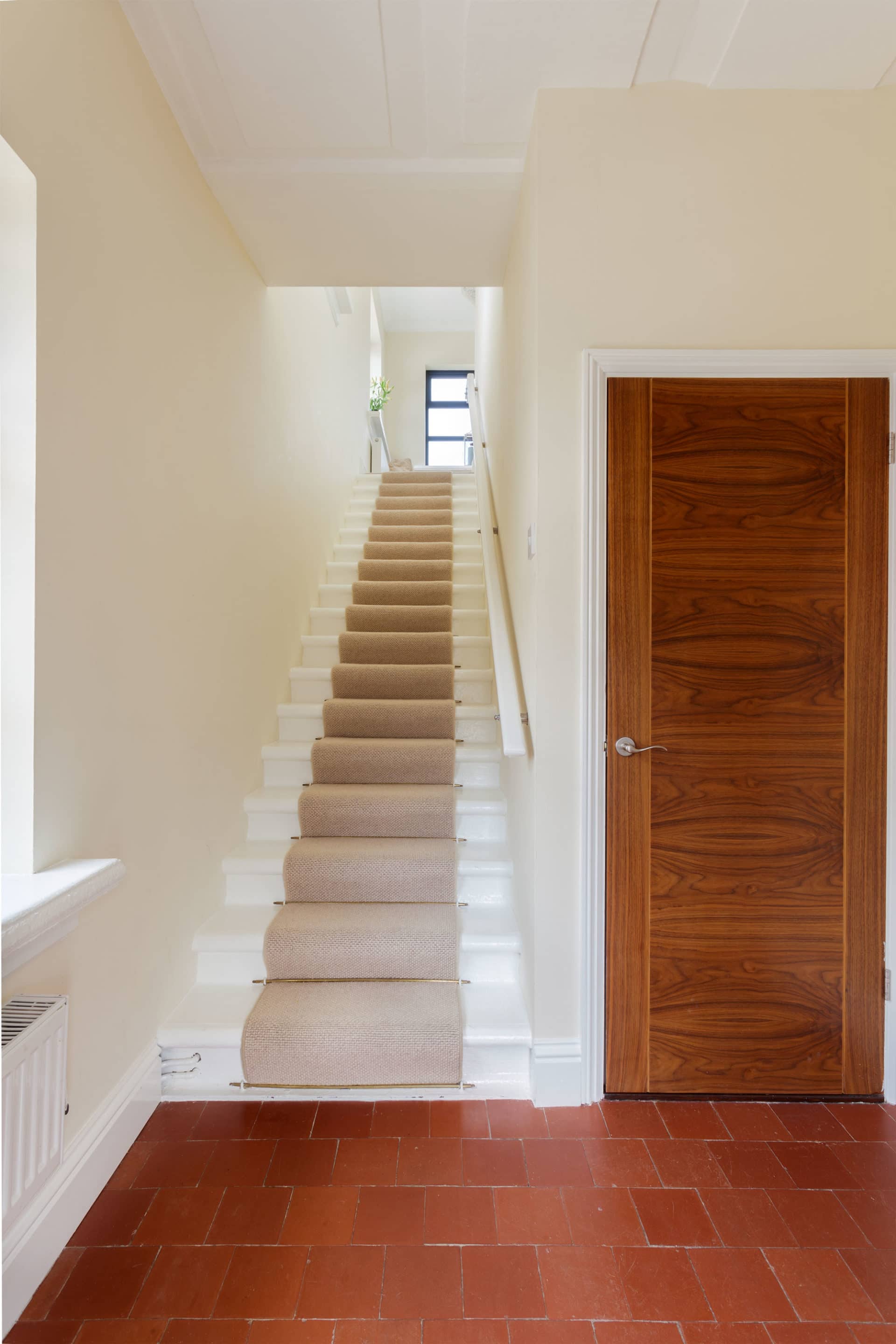
Clay tiles are an original feature in he hallway. The concrete staircase has been painted white
The effort involved in knocking down two walls and taking out the chimney stacks to free up space was formidable, so Lance decided to take on the job himself using a petrol disc cutter and a breaker. Several days of noise (with inevitable complaints from the neighbours) and tonnes of rubble later, it was done.
An experienced crew
Lance found a main contractor he’d used on previous projects as well as hiring various individual trades himself – again, people he knew from other building projects who were used to being on site together.
So, although Lance wasn’t project managing the supply and delivery of materials, he was coordinating the work of each trade and making sure they knew what to do, and when.
Six months into the build, and weary from the ever-growing costs, Lance was close to giving up. “I’d spent £300,000 by this stage and it seemed worse than it had been at the start,” says Lance.
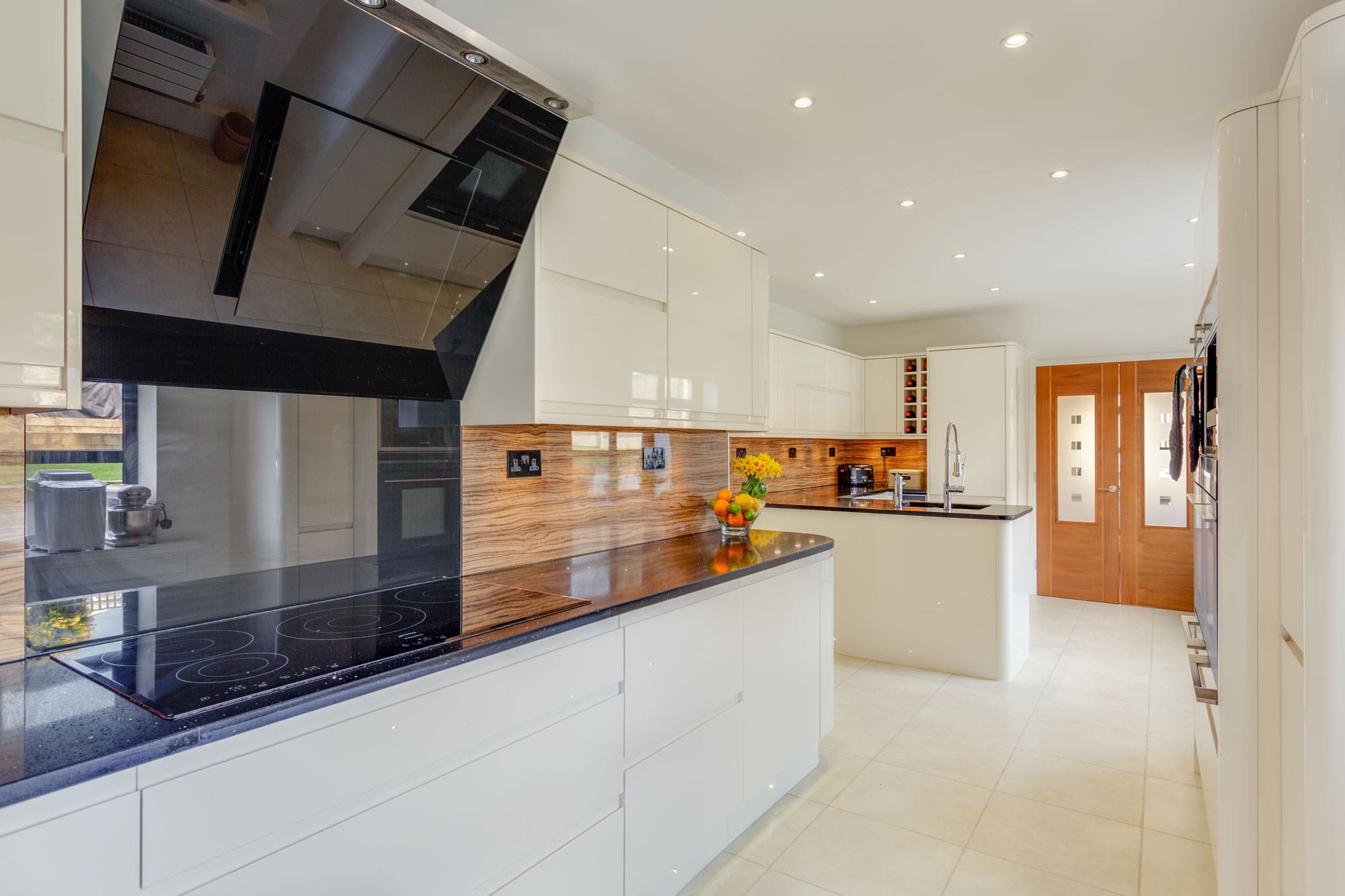
The zone used to be three rooms. Two concrete walls were knocked down and two fireplaces removed to create enough space for the modern glossy white kitchen
“It was my plumber who persuaded me that actually, it was 80% finished, even though it didn’t look like it. After that, things started to come together more quickly, with the first fix and then the kitchen being installed.”
Lance had initially financed the build via a regular mortgage and serviced the subsequent costs through remortgaging this house, plus a rental property he owned, and finally, taking some money out of his business. Eventually, he moved in to the property in March 2014 – “but it was only just liveable” – with Julia joining him later that summer once the house was in a better state.
Adding an extra floor
With the house now renovated, the next stage of the project for the couple was to build up and add a new storey to the property. “We spent about 18 months on the first phase, then decided to put the third floor on,” says Lance.
In the 1930s, John F Matthews had originally designed the house to have three storeys, but ran out of money, so Lance thought he had a good shot at getting permission to add another floor as a way of fulfilling those original intentions.
He asked the architect who had worked on the renovation phase to draw up a roof extension for a new master suite, but the bulky design was turned down by planners. Several neighbours also filed objections about loss of light and overlooking, and the situation was probably not helped by their fresh memories of the disruptive renovation phase they had just endured.
“I think they just decided, ‘we’ve had enough of this chap,’” says Lance.
It was at this point that he consulted another designer who he felt could bring more of a nuanced approach and some design flair to the project, HMY Hartwell Architects. Revised plans were passed via planning appeal in late 2014, and the differences between the schemes highlight the added value that the right architect can bring to a home project.
The new roof extension is smaller and set back on all sides, so it looks visually lighter than the original design, and the ‘cheeks’ of the glazed external balustrade are made from opaque glass to protect neighbours’ privacy, while still filtering through daylight.
The concrete chimney stack that runs up the front of the house has been elegantly extended. Internally, HMY Architects suggested positioning the new access staircase in the centre of the house, which avoided losing a room on the first floor.
When the planning application went in, Lance hadn’t yet replaced the house’s old brown PVCu windows, and it was stipulated that the new ones should be 1930s in style, to mimic the steel units that would have originally graced the property.
The new windows are in anthracite aluminium, standing out against the white render, and matching the external doors and the new bifolds on the top floor.
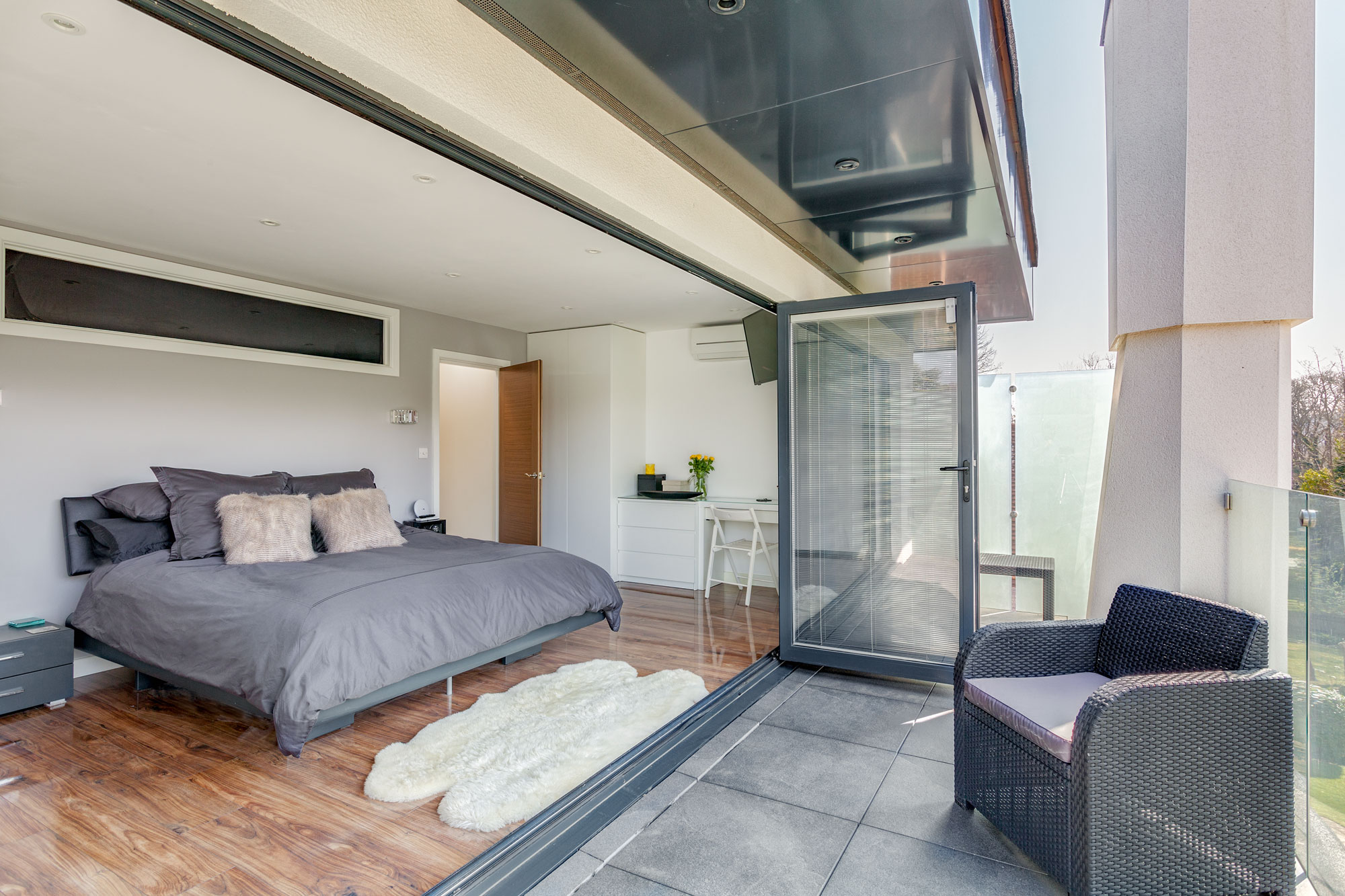
The bedroom is orientated towards the house’s best views, over a stream to a public park across the road; the terrace, accessed via full-width bifold doors, gets the sun until late in the day
When it came to constructing the extension, the house’s concrete structure finally worked in Lance’s favour. It allowed the lightweight timber frame addition to be built without needing to reinforce the existing roof.
“Our structural surveyor wanted us to dig up the roof and install a steel – but we argued that we already had a six-inch-thick concrete roof with steels running all the way through it. In the end they said, ‘fair enough, point taken,’” says Lance.
Lance had had the foresight to ensure that, during the renovation phase, the plumbing and electrics were taken up to roof level, ready to be connected at a future date, and that his new boiler and circuit board had enough capacity to cope with the extra demand.
Once the extension was finished, the original exterior was sandblasted back to the bare concrete and rendered, giving a uniform white finish.
Suntrap terrace
The top floor is now one of the highlights of the house, boasting views over the lush public park across the road. It’s an evening sun-trap, too, so Lance and Julia can push back the bifold doors and enjoy sundown on the roof terrace.
They’ve also installed a mini-kitchen with a fridge and hot-water tap up there, hidden behind cupboard doors, so they can make a morning cup of tea without having to trudge two floors down and back up.
The middle storey features three well-proportioned bedrooms, one of them ensuite, while the ground floor has a comfortable sitting room and separate dining room at the front of the house, a cloakroom and the large kitchen to the rear.
The original coffered ceilings and fireplaces hint at the house’s past. Lance has gone all-out on the Art Deco look in the dining room, with an antique dining suite including a sumptuous curved sideboard.
A terraced back garden has been designed with relaxation, entertaining and fun in mind, with a hot tub, a cabin containing a games room and large seating area.
WE LEARNEDTHE TV SHOWS and magazines are right – take costings with a pinch of salt. USE BUILDERS whose work you have actually seen. Don’t just choose a firm based on price, and always get fully costed quotes from the outset. DON’T SCRIMP on getting a good architect involved with the design. WE DIDN’T UNDERSTAND what we were getting ourselves into with the concrete construction – but then, nobody did, not even our builder. It was definitely a case of having rose-tinted glasses. IF YOU’RE RENOVATING, but planning to extend as a later date, install services with the capacity to cope with whatever you have planned for the future. |
From the street, the house is very striking, its style of architecture bridging the gap between 1930s and contemporary, with sparkling white render and anthracite aluminium windows and doors.
“We’ve tried to get the best of both – we wanted it to look Art Deco in style from the front, but at the same time you’ve got to make it work for modern living,” says Lance.
It’s easy to see why it stops people in their tracks as they walk by – even if it did cost plenty of money and effort for Lance and Julia to get here.
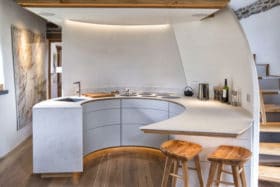
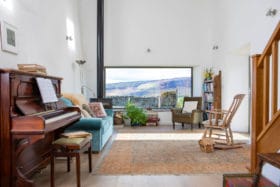































































































 Login/register to save Article for later
Login/register to save Article for later

